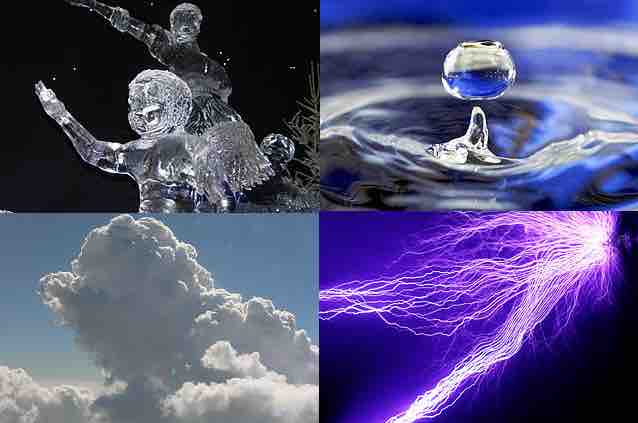A fluid is a substance that continually deforms (flows) under an applied shear stress. Fluids are a subset of the states of matter and include three of the four states—liquids, gases, and plasma (shown in ).

Four Fundamental States of Matter
Four fundamental states of matter: 1) top left corner corresponds to solid; 2) top right corner corresponds to liquid; 3) bottom left corner corresponds to gas; 4) bottom right corner corresponds to plasma.
Liquids form a free surface (i.e., a surface not created by the container) while gases do not. The distinction between solids and fluid is not entirely obvious. The distinction is made by evaluating the viscosity of the substance. Silly Putty can be considered to behave like a solid or a fluid, depending on the time period over which it is observed. It is best described as a viscoelastic fluid.
Fluids display properties such as:
- a) not resisting deformation or resisting it only lightly (viscosity), and
- b) the ability to flow (also described as the ability to take on the shape of the container).
This also means that all fluids have the property of fluidity. These properties are typically a function of their inability to support a shear stress in static equilibrium.
Solids can be subjected to shear stresses, and normal stresses—both compressive and tensile. In contrast, ideal fluids can only be subjected to normal, compressive stress (called pressure). Real fluids display viscosity and so are capable of being subjected to low levels of shear stress.
Although the term fluid includes both the liquid and gas phases, it is also commonly used as a synonym for liquid, with no implication that gas could also be present. For example, "brake fluid" is hydraulic oil and will not perform its required function if there is gas in it. This colloquial usage of the term is also common in the fields of medicine and nutrition (e.g., "take plenty of fluids").